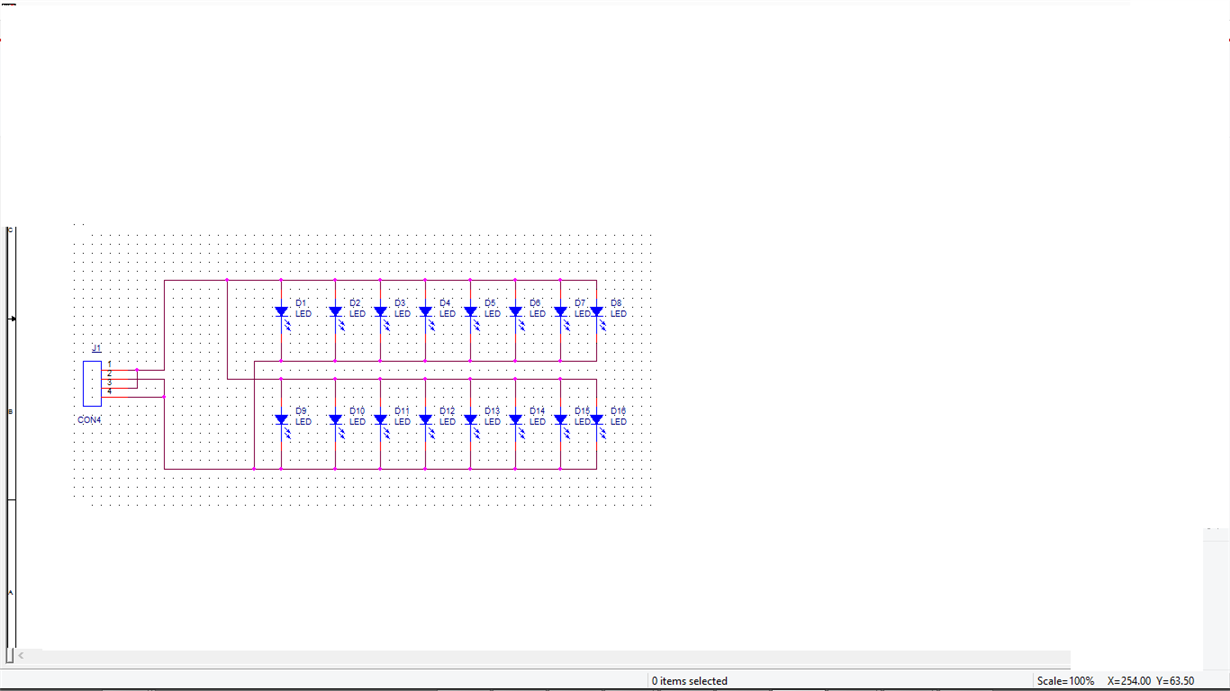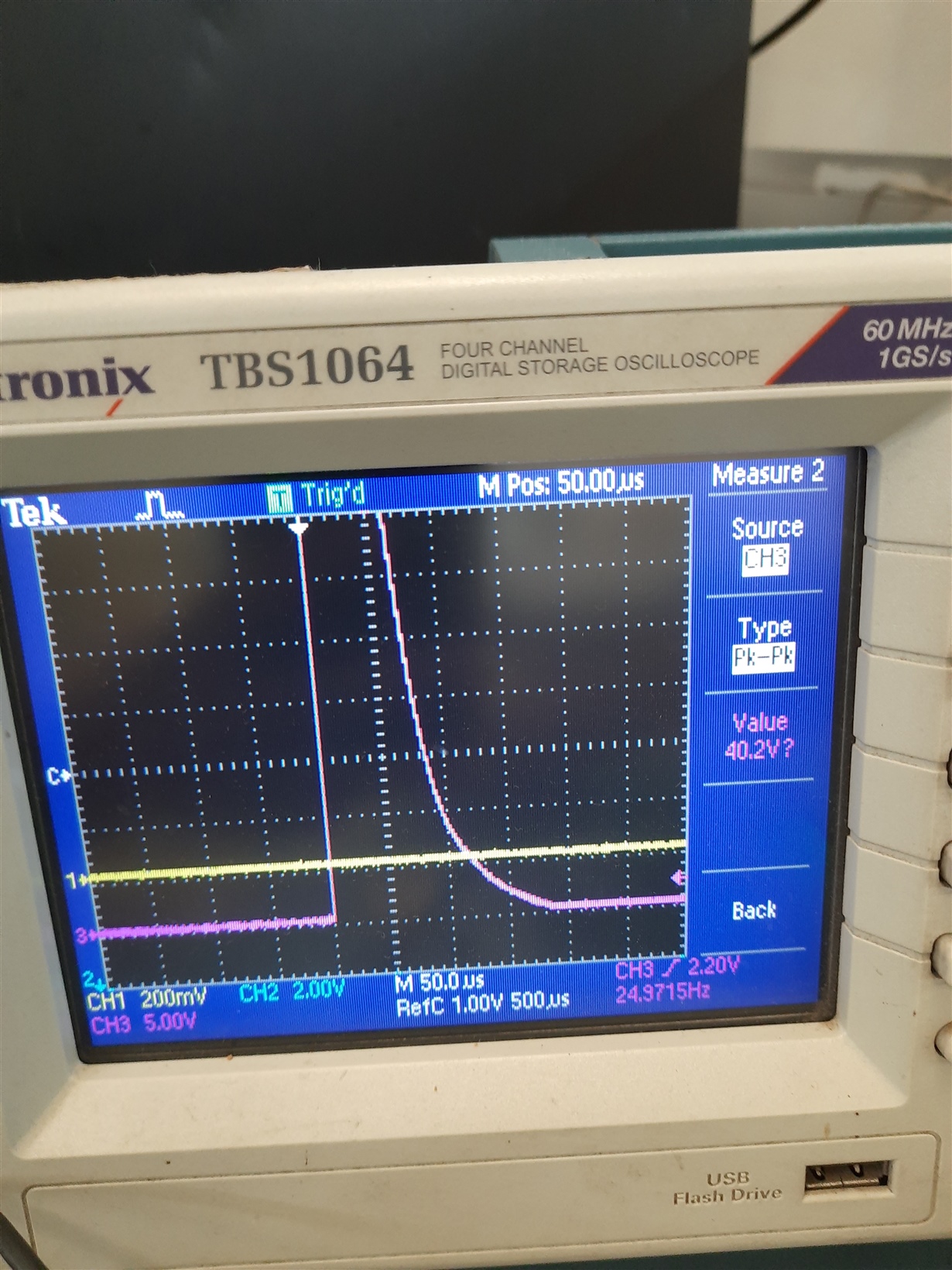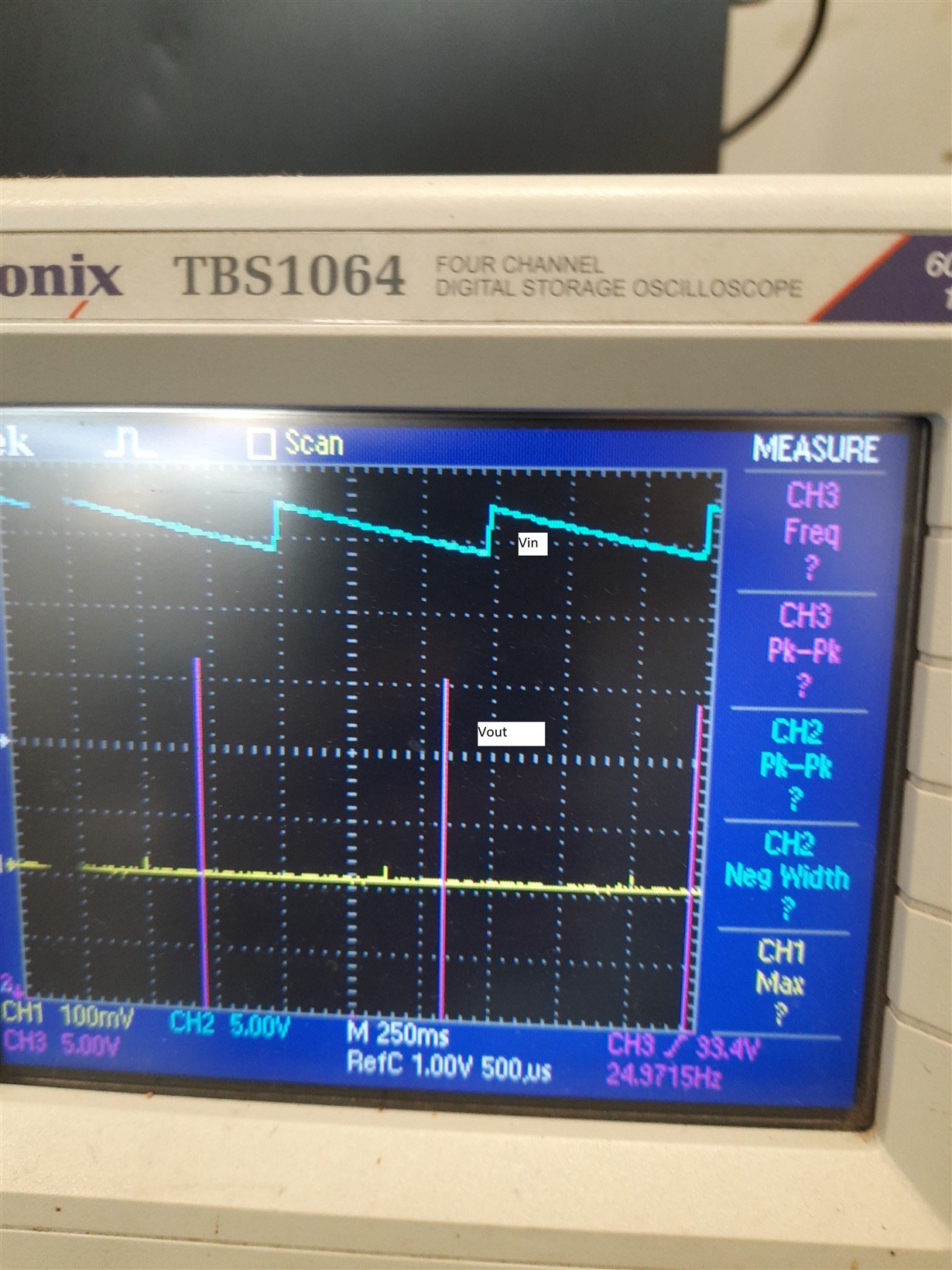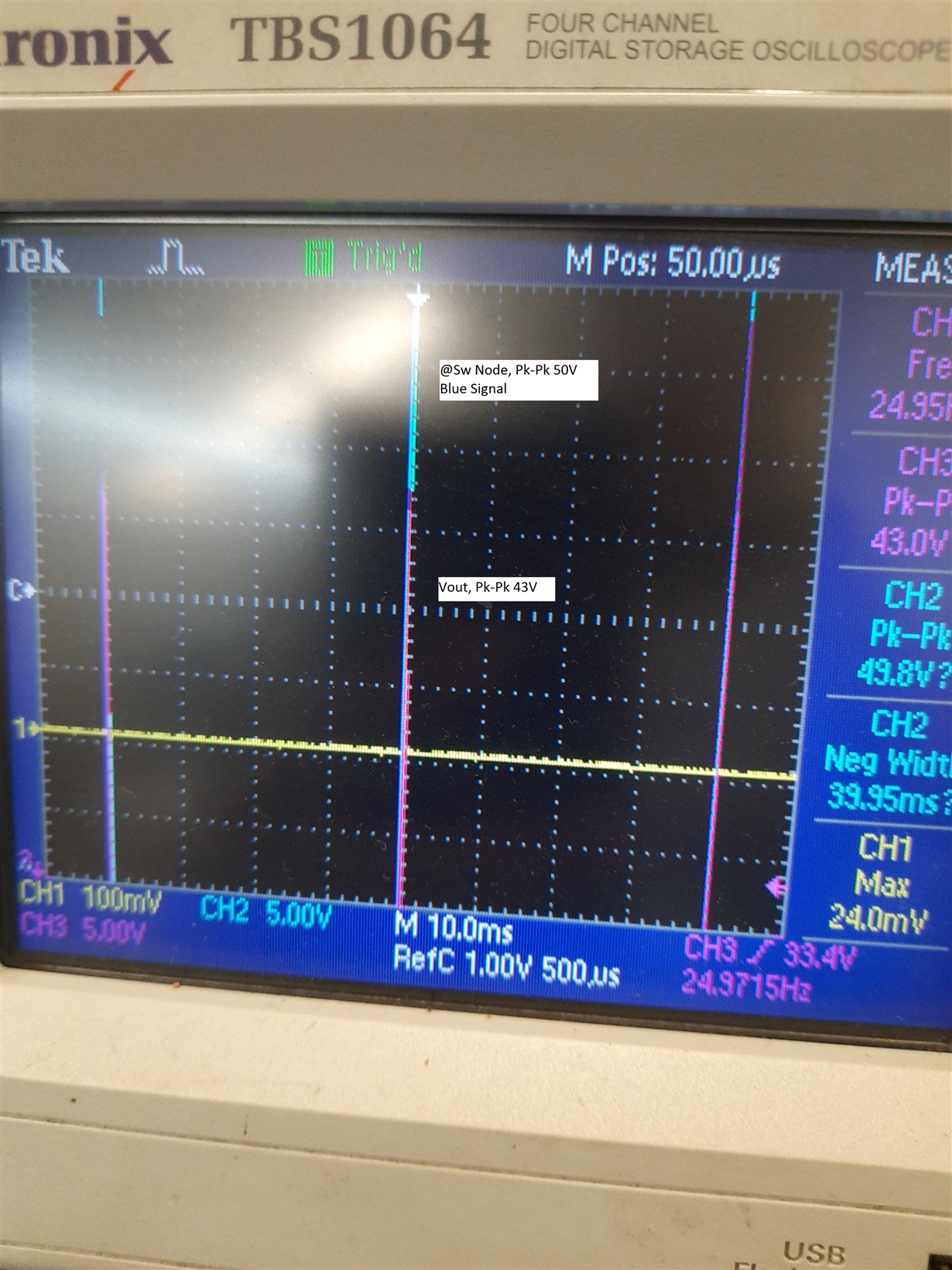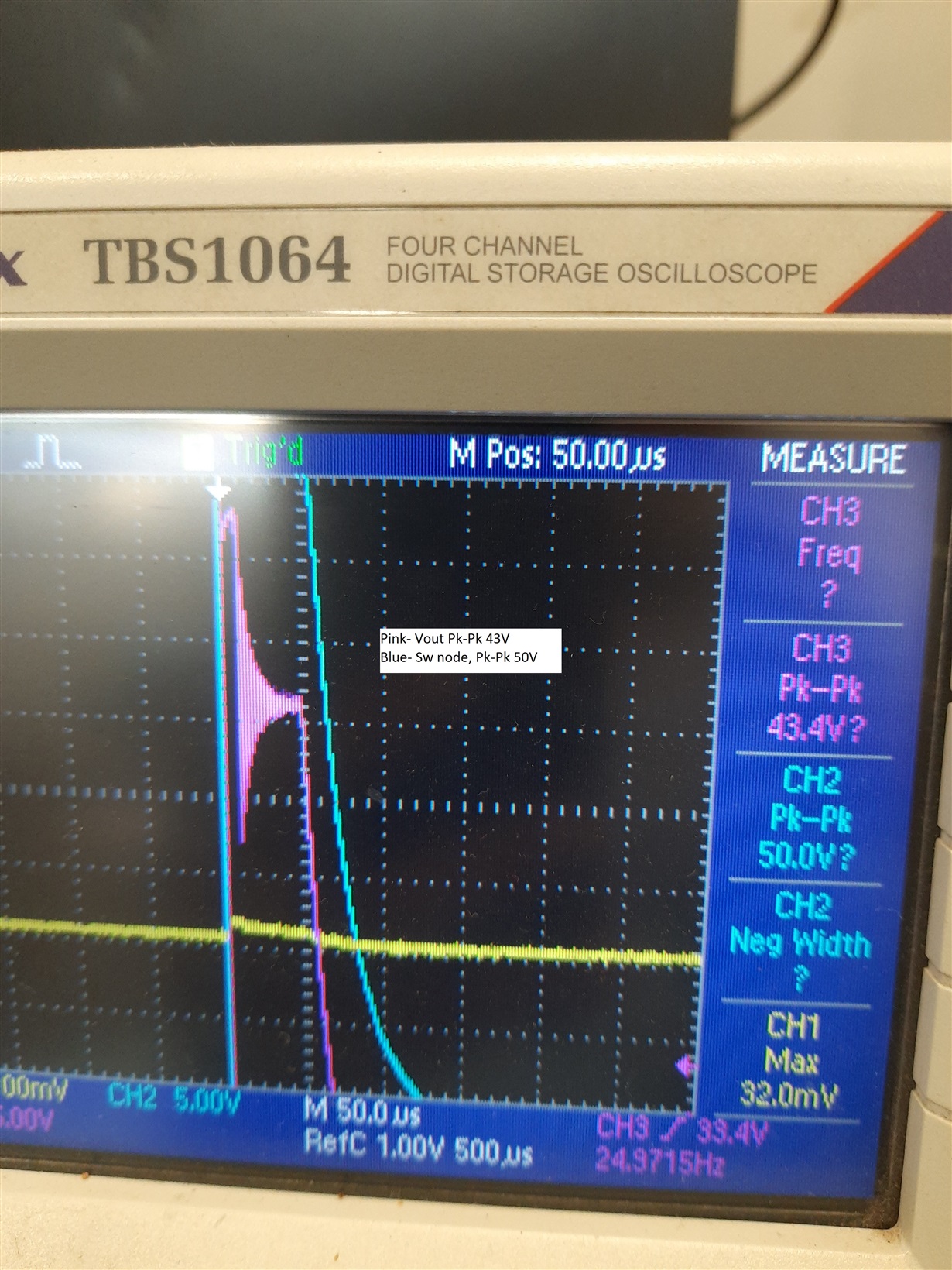Other Parts Discussed in Thread: TPS92515
I have following the below mentioned Led control Application for Machine Vision: used TPS92561 and TPS92515 Boost and buck controller.
Link:https://e2e.ti.com/blogs_/b/industrial_strength/archive/2018/05/31/light-that-freezes-motion-insight-into-a-led-lighting-control-design-for-machine-vision?keyMatch=LED%20DRIVER%20FOR%20STROBE&tisearch=Search-EN-everything
As per our requirement, I have updated the schematic, for your reference I have attached same.
I have faced an issue regarding boost voltage. As per the application note, it should be 48V, but our design it is showing 53V. and Output voltage of TPS92515 IC is 40V in place of 24V.
Also after connecting LEDs, with the trigger on time greater than 500uSec, Buck converter is getting burnt.
I might be missing something obvious.
Any ideas on how to troubleshoot this would be very helpful.
Thank you.


